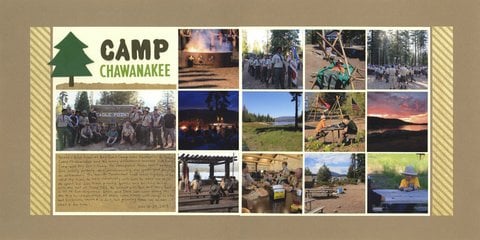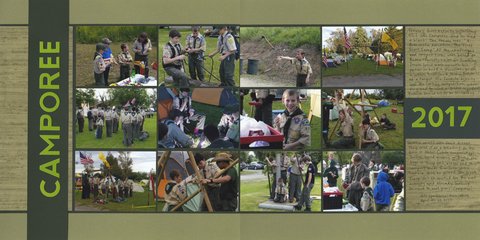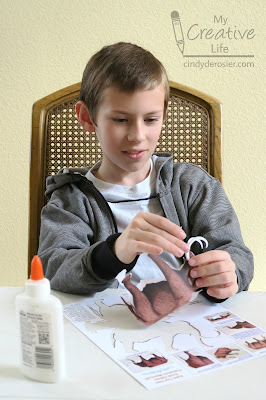Poured paint crafts are REALLY popular right now. I'm not surprised, as poured paint is mesmerizing to watch, fun to do, takes no special skills, and yields gorgeous end results. There are some downsides, of course: it uses a ridiculous amount of paint, the paint is mixed with a pricy pouring medium, the drying time is crazy long, the potential for a messy accident is huge, and even if everything goes right, clean-up is a pain. I challenged myself to come up with an inexpensive, low-mess version of a poured paint project that is 100% kid-friendly. In fact, I made three cards and wrapped a gift from a single poured paint project!
It took a bit of experimenting to get the results I wanted, so let me walk you through what I did. I'll also tell you what I wished I'd done. Lucky you, learning from my mistakes!
The first step is to choose your paint colors. I'd stick with three for your first project. I chose green, yellow, and pink. I should mention that I used
Folk Art acrylic paint (affiliate link). I didn't try other brands, so I'm not sure if they'll work as well. Don't use tempera paint. It will flake when it dries.
Find three empty containers (K-cups are PERFECT for this) and pour about 1/4 oz. (1/2 tablespoon) of paint into each. Thin the paint with a few drops of water, mixing it with a toothpick. Add more water until it will pour smoothly, but not be runny. Think heavy cream.
Set the paint aside and prepare your work surface. I covered my table with paper, then taped a piece of aluminum foil to the paper. In retrospect, I should have put the aluminum foil into a low-sided box, like the kind that hold flats of soda. But this worked out fine. I set up a posterboard behind my work space, which I envisioned as a just-in-case splash barrier (which I didn't end up needing). It did prove valuable though, as it reduced the glare on the foil significantly.
Next, I wadded up a small ball of foil and set it in the center of my foil work surface. I started by pouring pink onto the foil ball from a height of about 8 inches. It was too thick and the paint mostly just sat there. Trial and error. I thinned my paints a little and tried with yellow. Yes!
I poured green on top of that, then added more pink. Do you have any idea how difficult it is to use your non-dominant hand to take a photo of pouring paint while you focus on making sure said paint doesn't end up in the wrong place? I'll tell you. It's quite difficult.
After pouring the last of my paint, I used a toothpick to drag the paint out from the center just a little bit. Then I poked the foil ball to remove it.
I carefully lined up a piece of white cardstock over the paint...
... and lowered it into place. I gave it a gentle press...
... then carefully lifted it up. It worked!
I repeated the process two more times for a total of three pulled prints. I set them aside to dry. By now, the paint on the foil had smeared quite a bit and nearly reached the edges of the foil. It was really pretty and I had high hopes that the paint would dry nicely on the foil. I left it overnight and was happy to see that it dried beautifully.
I turned my attention to the cards. I trimmed them to size and mounted them onto green, yellow, and pink card bases.
Now, the foil. I had just enough to cover a small box. I crossed my fingers... and was thrilled that the paint didn't flake off when I bent the foil. Yea! I've never wrapped a gift in foil before, but it was so quick and easy. No tape needed!
This was such a fun project! I think the gift wrap and card go together beautifully. I consider this whole paint pouring experiment a grand success!
Have you tried pouring paint? Tell me what you've tried and how it worked, or if you're now inspired to give it a try!


















































